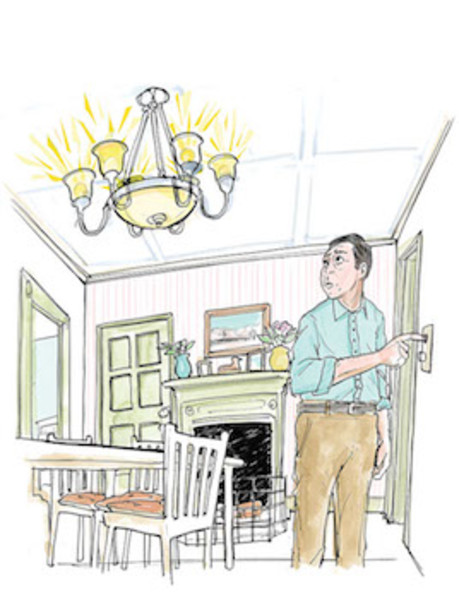
“We installed a reproduction, inverted bowl-style chandelier in our 1910 Foursquare. The fixture is on a dimmer, of course. We decided to use LED bulbs to save energy. But the lights tend to flicker and buzz whenever it’s on. It gives a strobe effect and I’m not sure the LEDs can take it! Still don’t know if I have an electrical problem.” – Tom Welsh
It’s never a bad idea to consult an electrician, especially if you experience flickering or dimming during a strong wind or when you turn on the vacuum cleaner. From what you describe, however, it’s most likely that the problem comes from combining new technology (the LEDs) with old technology (a dimmer designed for incandescent bulbs).
Start with the bulbs themselves. Check the package to make sure you bought dimmable LEDs. If the bulbs check out, it could be that the brand of bulbs you bought aren’t compatible with the existing (older) dimmer. Since LED technology is still in flux, some LEDs work fine with incandescent dimmers while others don’t. If switching brands doesn’t work, the culprit is probably the old dimmer.
Incandescent dimmers (known as TRAICs) work by turning the current on and off many times per second. The pulsing current causes a traditional incandescent to dim or brighten as the knob is adjusted. When bulbs are changed to LEDs, the dimming system may not work smoothly because LEDs are designed to be either on or off. And some LEDs do not dim as much as incandescents: some only dim to 25 percent of full brightness, for instance, while old-school bulbs can go down to one percent. For that reason, LEDs may “drop out” at the lower range of the dimmer switch. The result could be flickering and buzzing.
The solution then would be to change the dimmer to one that’s LED compatible. Buy a dimmer that’s been tested to work with a wide variety of LED bulbs, and one suitable for the LED load generated by your chandelier. Most incandescent dimmers were designed for a minimum load of 40 watts. LED bulbs may draw less. On the other hand, if the dimmer is designed to carry a huge load—say, 526108 watts—that might be the reason behind the disco-ball effect.






